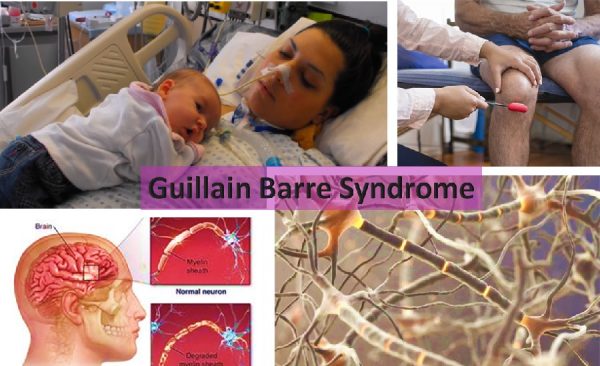
Guillain Barre Syndrome
Pune city in Maharashtra India is in news for the appearance of rare condition called Guillian Bare Syndrome. So far there are 73 cases are reported including 47 males and 26 females. One death is also reported. Doctors are suspecting that the food and water infection are triggers for the syndrome appearance. So far, cases are reported mainly in Pune’s Kirkatwadi, Nandoshi, Nanded, Dhayari, and Sinhagad Road.
What is Guillain Barre syndrome?
Also known as GBS, Guillain Barre syndrome is not contagious or inherited. It is a rare neurological disorder in which body’s immune system mistakenly attacks part of its peripheral nervous system. The nervous system that is located outside spinal cord and brain.
Other names for GBS are: Acute Inflammatory Demyelinating Polyneuropathy and Landry’s Ascending Paralysis.
When a person develops GBS it can range from mild case with brief weakness to devastating paralysis leaving the person unable to breath independently. In most cases people do recover from severe GBS and will continue to have some weakness after recovery.
GBS will not affect anyone. However, it can strike any person at any age of both sexes. GBS is an autoimmune disease because antibodies and white blood cells that protect us from microorganism’s invasion, mistakenly attacks healthy nerves of our body. The symptom starts few days or weeks of following a gastrointestinal or respiratory viral infection. Sometimes a surgery can trigger the GBS. According to reports worldwide number of GBS is increased following infection with Zika virus.
Symptoms of GBS:
- Muscle weakness, difficulty in vision
- Difficulty in speaking, swallowing and chewing
- Pricking sensations in hands and feet
- Severe body pain particularly at night
- Having hard time focusing, coordination problem and unsteadiness
- Abnormal heart rate and blood pressure
- Indigestion, bladder control problem.
The intensity of the symptoms increases over hours and days until certain types of muscles in the body cannot be used and person can almost paralyzed. At this stage the disease can be life threatening with heart rate increase, blood pressure increases and trouble in breathing.
What is the impact of GBS on health?
The central conducting core in the nerves called axon and it carries signal to various body parts. The axon is covered by a sheath called myelin. Myelin helps the axon to speed up the transmission of nerve signals. In patients with GBS, the body immune system damages myelin sheath of the axons of peripheral nerves and it also might damage axon. This results in improper or no signal transmit from the nerves and muscles begin to lose their ability to respond brain’s commands. When this happens body weakens. This can happen in hours or days. Once the nerves are damages brain also receives abnormal sensory signals from the body. This causes tingling, bugs crawling sensation a pain in the body.
Diagnosis of GBS:
There are many health conditions that are like GBS in the initial status. Doctors therefore might find it difficult to diagnose Guillain Barre syndrome. As the disease advances, doctors will keep patient under observation to see the symptoms that appear on both sides of body.
A nerve velocity test provides clue for further diagnosis. Cerebrospinal fluid that bathes spinal cord and brain will be collected to check protein level. The key diagnostic finding includes:
- Further abnormal sensation of numbness, tingling and pain will be noted
- Diminished deep tendon reflexes in limbs
- Elevated cerebrospinal fluid protein without elevated cell count
- Slow nerve signal conduction
- Viral infection and or diarrhea from recent health issue
Treatment:
There is no known cure for GBS. Certain treatment will help patient to recover and get back to normal life. GBS syndrome is a devastating disorder because of the way the disease spreads – rapid, sudden and weakness with paralysis. With good intensive care patient can recover steadily. Studies show nearly 70% of GBS patients eventually experience full recovery and get back to normalcy with assistance and aid. So far there is no known cure for GBS. Some therapies can help to lessen the severity of illness and speed up recovery time. Because of the paralysis type of complications, patients who has GBS are usually admitted and treated in hospitals under doctor care.
Supportive care will monitor breathing, heartbeat and blood pressure. In case patient breathe is impaired hospital will put patient on ventilator.
Plasma exchange or plasmapheresis and high -dose immunoglobulin therapy or IVIg are two treatments that are effective if the treatment starts two weeks of onset of GBS.
When the patients start showing improvement then they are transferred to rehabilitation center for further strength treatments. It helps resume their daily activities. Specific exercises selected by therapist will help to improve and strengthen the muscles and nerves.
Guillain Barre Syndrome is life threatening condition. Like many other diseases, early detection of GBS followed by proper treatment will help patients to recover fast. If not attended and not taken care, person who has GBS might take many months to recover and it can be life threatening too.
Image: At age of 26 Holly Geralch was pregnant with her first child. Within few weeks of her daughter’s birth Holly was diagnosed with GBS. After 2.5 months of hospitalization and one year treatment, Holly started responding and slowly recovered.
References:
- https://www.ninds.nih.gov
- https://www.who.int/news-room/fact-sheets/detail/guillain-barr%C3%A9-syndrome
- https://www.gbs-cidp.org/gbs/
- https://www.gbsas.org/holly-gerlach/
Author: Sumana Rao | Posted on: January 29, 2025
« FDA Bans Red Dye No 3 From Food Products And Dietary Supplements Tuberculosis Outbreak In Kansas City »






















Write a comment